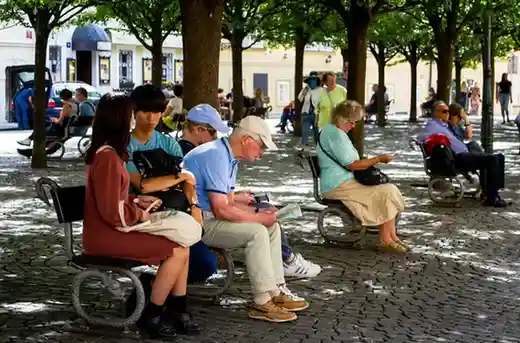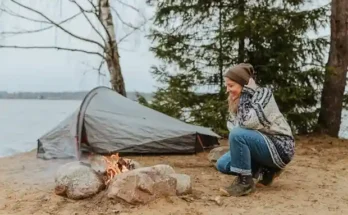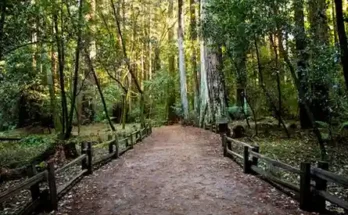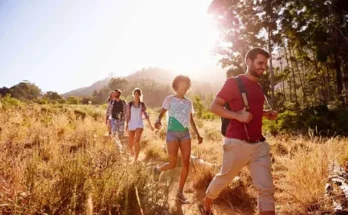A Return to Nature:
Over the past few years, something extraordinary has been unfolding across the globe—a mass migration back to the outdoors. It’s not driven by necessity or tradition, but by a deep, collective longing to reconnect with something ancient, raw, and real. As our lives grow increasingly digitized and fast-paced, people are stepping outside in record numbers to slow down, breathe deeply, and experience the world as it was meant to be experienced.
From mountain trails to ocean waves, the outdoor world offers not only escape but revival. This isn’t just a passing trend—it’s a lifestyle shift. A wild awakening. And it’s reshaping how we live, travel, play, and even think.
Outdoor Living:
-
The Rise of the Backyard Revolution
The outdoor movement isn’t confined to remote hiking trails or national parks. It begins at home. More people are transforming their backyards, patios, and balconies into personal nature retreats. String lights dance above cozy fire pits. Outdoor kitchens sizzle under the stars. Hammocks sway gently beside vegetable gardens.
This is not just landscaping—it’s lifestyle crafting. It’s about reclaiming outdoor spaces as places for conversation, reflection, and joy. With wellness at the center of modern design, homeowners are integrating nature into daily life, turning backyards into restorative spaces where screens take a backseat to sunsets.
-
Nature as an Extension of Home
Architects and designers are embracing the “biophilic” trend—design that nurtures a connection to the natural world. Sliding walls, open-air showers, and green roofs are becoming popular. It’s not uncommon now to see homes with seamless transitions between indoor comfort and outdoor beauty.
Outdoor living isn’t a seasonal affair anymore. With weather-resistant furniture, built-in heaters, and sustainable materials, these spaces are designed to be used year-round—whether for stargazing on a chilly night or sipping morning coffee with the sunrise.
The New Age of Adventure Travel:
-
Escaping the Ordinary
Adventure travel has surged into the spotlight, not as a daredevil pursuit but as a deeply human craving for exploration and authenticity. People want more than sightseeing—they want to feel the places they visit. That means hiking through Iceland’s lava fields, paddleboarding in alpine lakes, or camping in the wild deserts of Utah.
Even luxury travelers are swapping five-star resorts for eco-lodges nestled deep in the jungle or minimalist cabins perched on cliff edges. The new definition of luxury is intimacy with nature—and the experiences that come with it.
-
Adventure for All Abilities
The outdoor world is also becoming more inclusive. Adaptive sports and accessible trails are allowing people of all abilities to experience the wild in meaningful ways. Gear companies are creating products for every body type, skill level, and background. Inclusivity in the outdoors is no longer just a discussion—it’s a movement.
Whether you’re scaling peaks or simply walking a wooded trail, adventure isn’t measured by elevation but by presence. The point is not how far you go, but how deeply you connect.
Nature as Healer:
-
The Rise of Eco-Therapy
In a world where stress, anxiety, and digital fatigue run rampant, nature is emerging as one of the most effective and accessible forms of therapy. Forest bathing, originally a Japanese practice known as shinrin-yoku, encourages slow, mindful walks in the woods—engaging all senses in a calming, restorative experience.
Psychologists and wellness experts now widely agree: nature heals. Studies show that even a few minutes outdoors can lower cortisol levels, improve mood, and enhance creativity. It’s not a placebo—it’s science.
-
Unplugging to Recharge
Perhaps the most radical act in today’s hyper-connected world is to unplug. Outdoor spaces provide the perfect setting for digital detoxes, solo retreats, and screen-free vacations. There’s a growing demand for places where Wi-Fi doesn’t reach—because that’s where clarity begins.
Nature invites us to slow down. To listen. To observe. And most importantly, to be present.
Sustainable Exploration:
-
Travel with a Lighter Footprint
With more people exploring the outdoors, there’s also a heightened awareness of the need to protect it. Sustainable travel is no longer a niche—it’s a necessity. From eco-tour operators to carbon-neutral gear brands, the outdoor industry is undergoing a green evolution.
Campers are adopting Leave No Trace principles with reverence. Hikers are picking up trash left by others. Travelers are choosing trains over planes, and bikes over cars, not just to lower emissions but to experience the world at a more human pace.
-
Conservation Through Connection
Interestingly, the more people spend time outdoors, the more they care about it. Parks and preserves are seeing a surge in volunteerism and grassroots conservation. Families are planting trees, restoring trails, and teaching their children the sacred responsibility of stewardship.
This isn’t just about policy—it’s about personal accountability. The planet isn’t a playground. It’s a partner.
Innovation Meets Nature:
-
Tech-Savvy Meets Trail-Ready
Modern outdoor gear is a perfect fusion of function, form, and futuristic thinking. Jackets made from recycled ocean plastic. Solar-powered backpacks. Shoes with biodegradable soles. Innovation is no longer just about performance—it’s about purpose.
Tech plays a role, too. GPS watches track elevation and heart rate. Satellite messengers ensure safety in remote areas. But the goal is never to outsmart nature—it’s to experience it more deeply, safely, and sustainably.
-
Local Brands and Ethical Choices
The rise of small, local outdoor brands is reshaping the market. Consumers are looking beyond big names, seeking products that align with their values. Ethically sourced materials, fair labor practices, and transparent manufacturing are now as important as waterproof ratings.
People are investing in fewer, better things—gear that lasts, serves, and respects the planet it’s made to explore.
The Future of Outdoor Culture:
-
Education and Empowerment
Outdoor education is reaching new heights. Wilderness schools, survival workshops, and community hikes are helping people of all ages build confidence in nature. The more we know, the more we care. And the more we care, the more we protect.
Empowerment is key—especially for communities that have been historically excluded from outdoor spaces. From indigenous-led tours to programs for urban youth, a more diverse and inclusive outdoor future is taking shape.
-
A Global Outdoor Family
What’s most exciting about this outdoor renaissance is that it’s bringing people together across borders, cultures, and generations. Whether it’s sharing stories by a campfire, exchanging trail tips online, or joining forces for a river cleanup, the outdoor community is becoming a global tribe.
In nature, titles and timelines fall away. We are simply humans under one sky—relearning what it means to belong.
Conclusion:
In this new era, the outdoors is more than a destination. It’s a mindset. It’s a reminder that beyond the buzz of cities and screens, there’s a place where we can be fully alive—where our senses awaken, our thoughts clear, and our hearts open.
We don’t have to climb Everest or cross continents to rediscover this. Sometimes, it’s enough to walk barefoot on grass, breathe pine-scented air, or gaze at a horizon unbroken by buildings.
The wild isn’t just out there—it’s within us. And as we continue to explore it, protect it, and live alongside it, we may just find the version of ourselves we were always meant to be.




